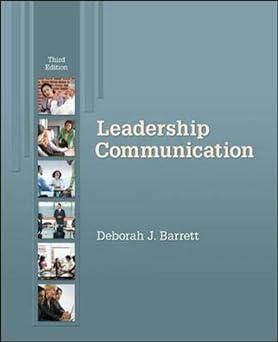2. Use one of the idea-generation approaches introduced in this chapter to determine your primary messages. On
Question:
2. Use one of the idea-generation approaches introduced in this chapter to determine your primary messages. On his way to the plant office, Jason Starnes passed by the production line where hundreds of gloved, uniformed workers were packing sausages and processed meats for shipment to grocery stores around the world.
Jason’s company, Superior Foods Corporation, based in Wichita, Kansas, employed 30,000 people in eight countries and had beef and pork processing plants in Arkansas, California, Milwaukee, and Nebraska City. Since a landmark United States–Japan trade agreement signed in 1988, markets had opened up for major exports of American beef, now representing 10 percent of U.S. production.
Products called “variety meats”—including intestines, hearts, brains, and tongues—were very much in demand for export to international markets.
Jason was in Nebraska City to talk with the plant manager, Ben Schroeder, about the U.S. outbreak of bovine spongiform encephalopathy (mad cow disease)
and its impact on the plant. On December 23, 2008, the U.S. Department of Agriculture had announced that bovine spongiform encephalopathy had been discovered in a Holstein cow in Washington State. The global reaction was swift: Seven countries imposed either total or partial bans on the importation of U.S. beef, and thousands of people were chatting about it on blogs and social networking sites. Superior had moved quickly to intercept a container load of frozen Asian-bound beef from its shipping port in Los Angeles, and all other shipments were on hold.
Step by Step Answer:







